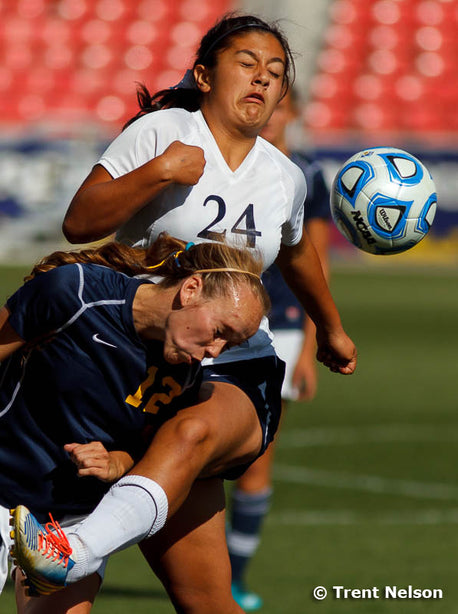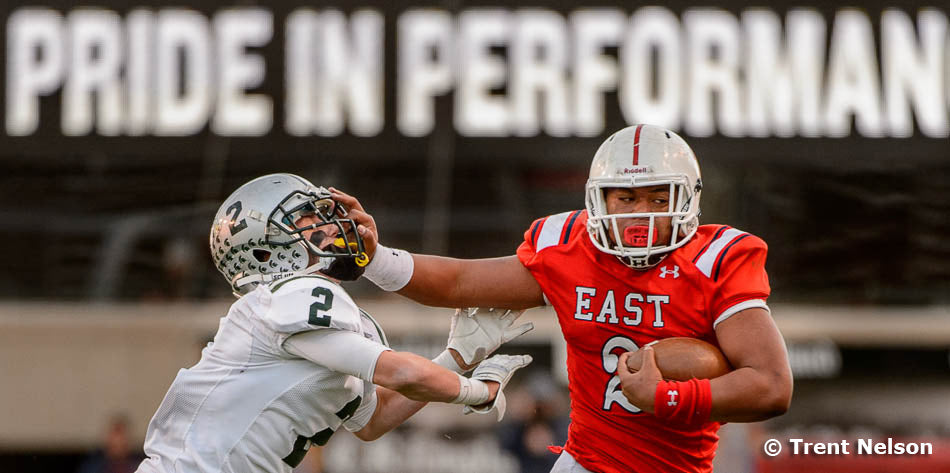The year was 1980. And the Russian hockey team was heavily favored to win the gold. With one game left to advance to the final, they just had to defeat the U.S., which everyone knew they would.
And then the impossible happened, Mike Eruzione sent the puck into the net with 10 minutes left in the final period—putting the U.S. ahead 4-3. Now, we all know how the story ends.
"Miracle on Ice" was voted the greatest sports moment of the 20th Century, and it was the only Sports Illustrated cover without a caption.
How’s that for taking a sports photo?
Sports have always had the unique and incredible ability to bring people together. From high school football games that rally a community to international competitions like the Olympics, even if you’re not a sports fan, you’ve been inspired a time or two reveling in the spirit of competition. And if you’re a photographer, you’ve definitely got more than enough inspiring moments to capture on camera if you’re shooting sports. In fact, you can enter these inspiring shots to the Pictureline Sports Photo Contest.
Here are a few sports photography tips to get you started:
Shutter Speed – Sports Photography
A high shutter speed is key to stopping action. Since shutter speed is measured in fractions of seconds, the bigger the denominator, the faster your shutter speed. Most sports photographers use a shutter speed of about 1/1000 of a second to get the shot. Whether you’re catching a slam-dunk in motion or a gymnast in the middle of a back tuck, a high shutter speed is crucial, so it’s important to have a lens with a fast F-stop such as an f/2.8 or f/4.
You can also use a slow shutter speed in sports photography. Wait, what? Slow shutter speed? We know; it completely goes against everything we just said. However, maybe you want to show motion versus stop motion. While the shutter speed will vary by situation, if you want to allow the movement to blur, try a shutter speed of about 1/100 or 1/80. Often times, this will create a blurry background that shows the motion, but keep the subject in focus and add energy to the photo.
 Trent Nelson | The Salt Lake Tribune
Trent Nelson | The Salt Lake TribuneDixie's Cassidy Gray, defended by Juan Diego's Claire Kolff as Juan Diego faces Dixie in the 3A high school girls' soccer state championship game at Rio Tinto Stadium in Sandy, Saturday October 26, 2013.
Canon 1D; EF300mm f/4L IS USM; 1/1600 sec; f/4.0; ISO 800
Burst Mode – Sports Photography
In this camera mode (also known as continuous high speed), you’re able to quickly capture several photographs in succession, which makes it perfect for getting action shots. Burst mode allows you to press the shutter button once and hold it down to get several shots in one go. This increases the likelihood of capturing that perfect sports shot. Afterward, you can select the best photos from the sequence or arrange them to show the transition in movement.
Memory Cards – Sports Photography
If you’re shooting at fast speeds, you’ve got to have memory cards that can keep up. Memory cards should have write speeds of 80-90 MB/s or faster. The last thing you want is to miss the game winning shot because you’re waiting on a slow write speed. Be sure to carry a few memory cards as well!
 Trent Nelson | The Salt Lake Tribune
Trent Nelson | The Salt Lake TribuneTimpview players prepare to take the field as Woods Cross faces Timpview High School in the 4A State Semifinals in Salt Lake City, Thursday November 14, 2013.
Nikon D4; 14.0 mm f/2.8; 1/125 sec; f/4.0; ISO 6400
ISO – Sports Photography
During the day or in good lighting, it’s easy to set a high shutter speed and snap away. However, in low light, you’re going to need to play around with the ISO. By increasing the ISO, the camera is able to see more light. An ISO of 1600 offers a nice middle ground between low and high while still allowing you to shoot at high shutter speeds. However, you have to be careful with high ISO settings as a greater ISO can add more noise to photos. Newer cameras can go all the way up to ISO 6400 and still produce quality photos, but if your camera isn’t one of the most recent models, watch out for noisy images when you increase the ISO above 800.
 Trent Nelson | The Salt Lake Tribune
Trent Nelson | The Salt Lake TribuneThe peloton races toward Boulder during stage two of the Tour of Utah Wednesday August 7, 2013.
Canon 1D; EF16-35mm f/2.8L USM; 1/40 sec; f/8; ISO 100
Flash – Sports Photography
While we’re on the topic of shooting in low light, let’s talk about flash. You may be tempted to use your flash, but know that many sporting events have strict no flash policies. Hence, why you’ve got to master ISO. Flash can interfere with the athletes’ ability to perform or even distract and cause injury, therefore an on-camera flash is usually out of the question.
 Trent Nelson | The Salt Lake Tribune
Trent Nelson | The Salt Lake TribuneSummit's Allison Gorringe and Waterford's 24 collide as Waterford faces Summit Academy in the 2A high school girls' soccer state championship game at Rio Tinto Stadium in Sandy, Saturday October 26, 2013.
Canon 1D; EF300mm f/4L IS USM; 1/6400 sec; f/4.0; ISO 400
Equipment – Sports Photography
Since you can’t be on the field, court, ice, or wherever else the athletes are, you’ve got to invest in some quality equipment. A long (300-400mm), fast (f/2.8 or f/4) lens with high-end glass is preferable for sports photography—this way you can get into the goalie box, onto home base, or in the water without physically being there.
It’s also equally as important to carry all the equipment you need, which probably requires multiple lenses, flash cards, and filters. Invest in a sideline bag, belt, or photo vest.
 Trent Nelson | The Salt Lake Tribune
Trent Nelson | The Salt Lake TribuneEast's Ula Tolutau stiff-arms Olympus's Connor Haller as East defeats Olympus High School in the 4A State Semifinals in Salt Lake City, Thursday November 14, 2013.
Nikon D4; 200-400mm f/4; 1/1250 sec; f/4.0; ISO 1600
Know Your Sport – Sports Photography
Knowing your sport is absolutely essential to sports photography. You’ve got to know how the players will move, where they’re going to end up, where the action will shift after a call, etc. This is how you’ll know where to be, how to position yourself for the shot, and how to position your camera. The less time you spend figuring out the logistics, the more time you’ll spend taking great photos.
In addition, don’t ignore your surroundings. So much of sports photography is the emotion involved—the expressions on the athletes’ faces, the crowd, the stadium. Incorporate the setting into photos and add a sentiment to your sports photography.
 Trent Nelson | The Salt Lake Tribune
Trent Nelson | The Salt Lake TribuneJuan Diego's Emily Pascua reacts to the loss, as Juan Diego faces Dixie in the 3A high school girls' soccer state championship game at Rio Tinto Stadium in Sandy, Saturday October 26, 2013.
Canon 1D; EF300mm f/4L IS USM; 1/1000 sec; f/4.0; ISO 1000
Feeling like a pro now?! Submit some of your best shots to the Pictureline Sports Photo Contest!
All images provided courtesy of Trent Nelson.

